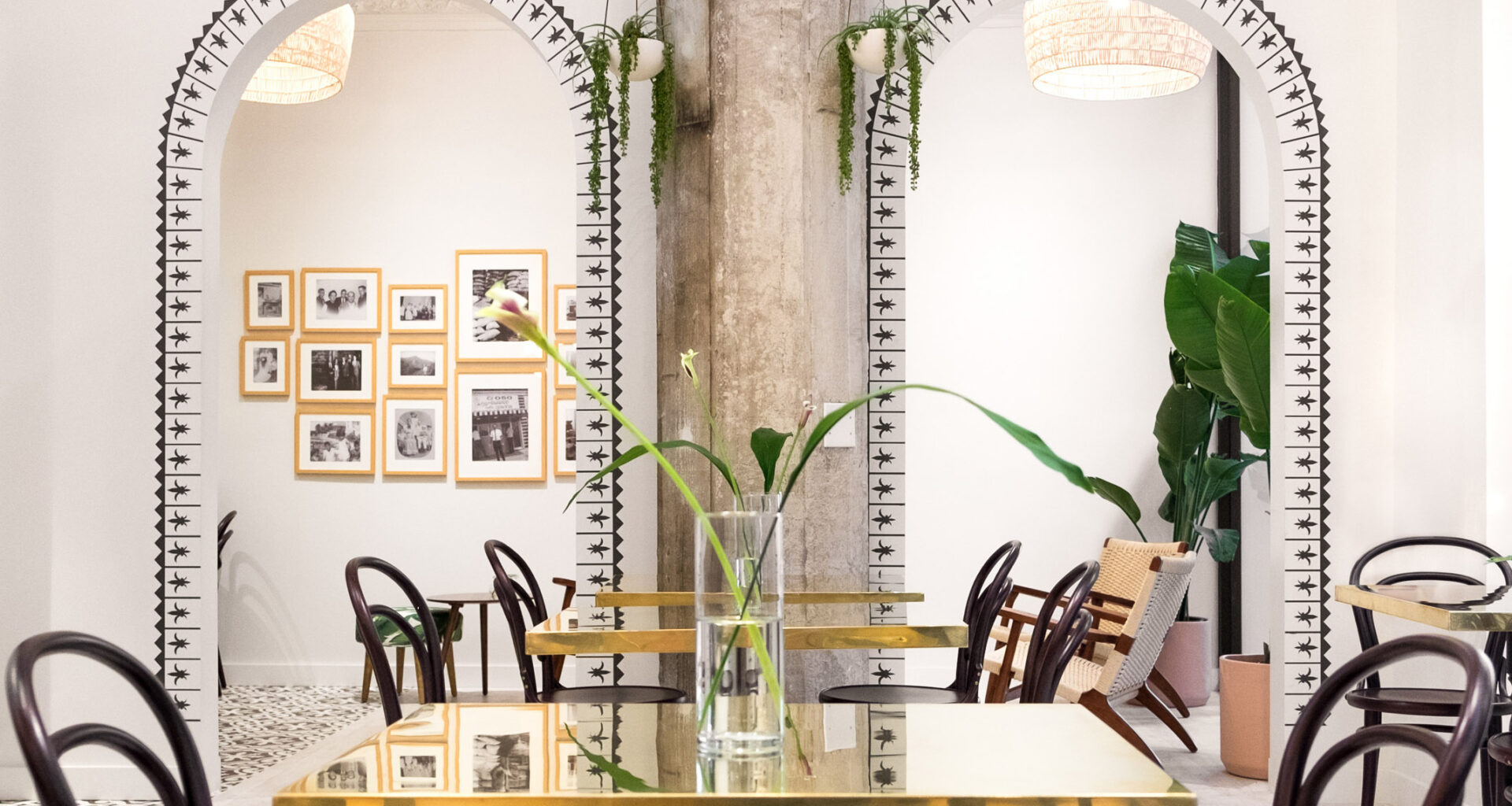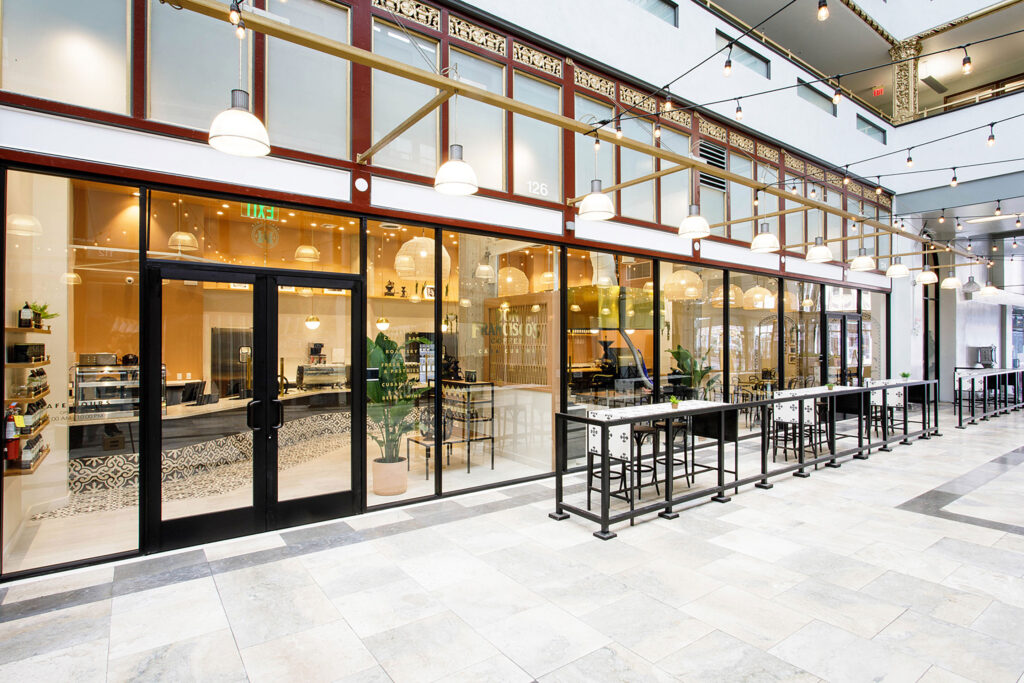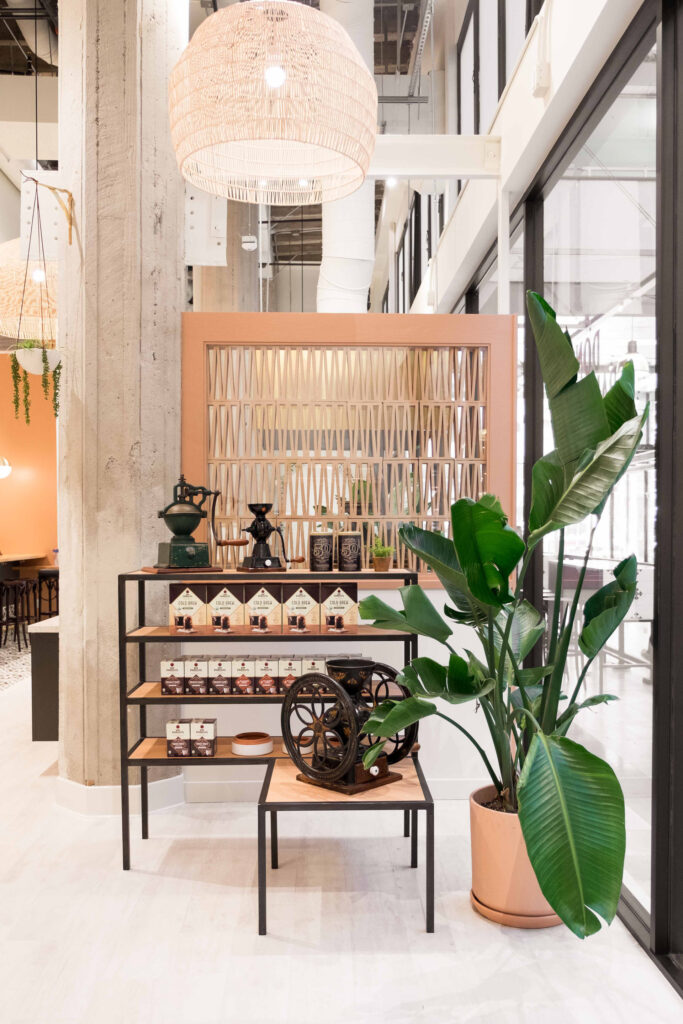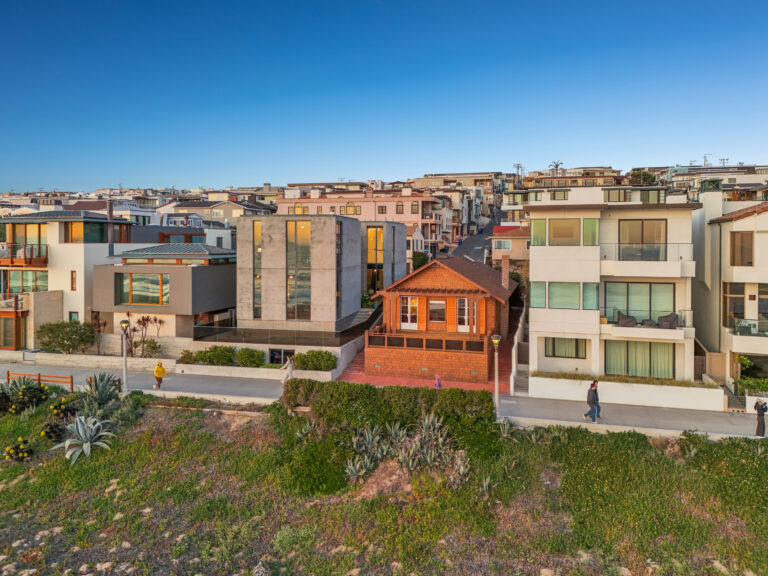Don Francisco’s Coffee Casa Cubana
Omgivning’s award-winning design of a brick-and-mortar expresses the cultural, character-rich origin story of a classic brand.
“It’s great time to be a designer in Downtown L.A.,” says Norella Carboni Amiel, director of design for Omgivning, a practice that is on the march in architecture and interiors, prolifically so in Downtown Los Angeles, where its has a host of new projects on the boards, and one for the books—Don Francisco’s Coffee Casa Cubana.
Don Francisco’s buzzy brick and mortar—the company’s first—was a real wakeup call for both the visually-driven consumer and the 1924 Broadway-Spring Arcade Building the café calls home. Though the building wasn’t without its architectural charms (imposing glass ceiling, Spanish Baroque arches), it clearly needed new life. Enter Omgivning’s exquisite, award-winning café for the Don Francisco’s coffee brand, established in the 1950s by the Gaviña family, who migrated from Spain to Cuba in the 1870s, then left for Los Angeles following the Cuban Revolution.
Omgivning privileged the warmth and richness of this heritage to conceive a design with precisely these qualities while introducing new imagery and tones. The design is best described as a tropical blend. Decorative elements include lush terracotta hues, Caribbean-style plants, and a custom wall covering drawn from vintage stamps of native Cuban birds.
A fleur de lis around the space’s arches comes from the family’s crest, and tile patterning is inspired by Don Francisco’s logo. These complement personal touches, including reproductions of vintage family photos and family donations like a collection of historic artifacts for roasting and grinding coffee.
Today Don Francisco’s café is a destination in constant dialogue with its immediate and evolving environment. “The Arcade Building’s past matches that of Downtown Los Angeles in general, and its neighborhood, the Historic Core, in particular,” says Carboni Amiel in reference to this developing conversation. “If awards are any indication of success, I think it speaks broadly to the fact that we got the balance of history and modernity just right.”
Photographs: Courtesy Of Emi Kitawaki







